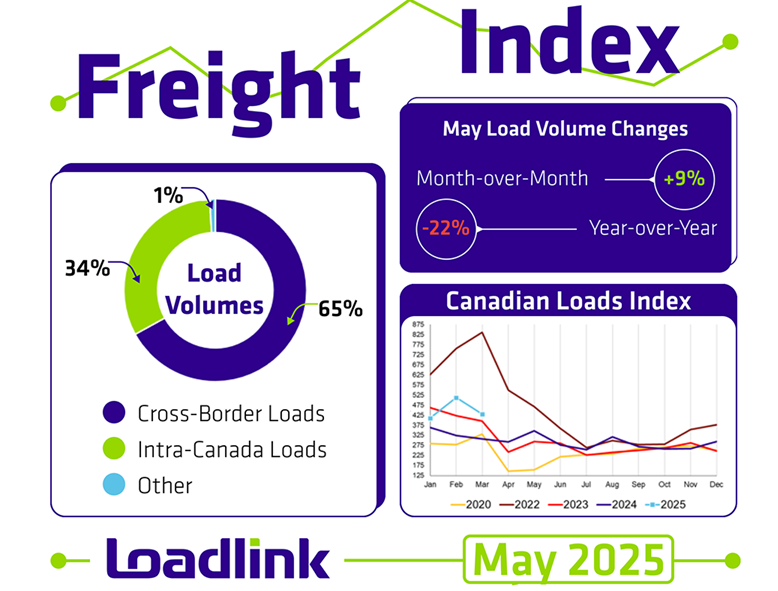Aktuelle Klasse 8 Lkw-Aufträge weisen Schwäche auf
Die Lkw-Branche der Klasse 8 hat in letzter Zeit deutliche Anzeichen von Schwäche gezeigt. Da die Fuhrparks über Zölle und den Zustand der Wirtschaft nachdenken, ist der erwartete Auftragsschub in der Klasse 8 deutlich zurückgegangen. Ursprünglich wurde ein robustes Jahr für diese Aufträge prognostiziert, doch die Unsicherheiten in Bezug auf Emissionsstandards und Handelsspannungen haben die Fuhrparks vorsichtig werden lassen, was Investitionen in neue Lkw angeht.
FTR hat berichtet, dass die vorläufigen Aufträge der Klasse 8 nur 8.900 Einheiten im Juniund spiegeln eine verblüffende 25% Rückgang ab Mai und eine 36% Rückgang im Vergleich zum Vorjahr. Dies liegt deutlich unter dem 10-Jahres-Durchschnitt von 19.213 Einheiten für Juni, was den niedrigsten Wert seit 2009 darstellt. Ein solcher Rückgang deutet auf ein Unbehagen sowohl im On-Highway- als auch im Berufsverkehrssegment hin und veranlasst Fuhrparks, ihre Einkaufsstrategien zu überdenken.
Faktoren, die zur schwachen Nachfrage beitragen
Marktanalysten betonen, dass die Unsicherheiten durch potenzielle Abschnitt 232 Zölle die Lkw der Klasse 8 und ihre Komponenten betreffen. Die sich abzeichnenden Anpassungen an EPA27 NOx-Emissionsnormen tragen zu dieser Zurückhaltung bei und veranlassen zahlreiche Fuhrparks, den Kauf von Ausrüstungen zu verschieben. Diese Zurückhaltung wird durch die bestehenden hohen Lagerbestände verstärkt, die einen weiteren Druck auf die Nachfrage und die Produktion ausüben.
Die flache Marktdynamik im Mai
Im Mai stellte ACT Research eine deutliche Abflachung des Frachtaufkommens bei gleichzeitigem leichten Kapazitätsabbau fest. Diese Stagnation, die in der Studie Index für den gewerblichen GüterkraftverkehrDies wird auf verschiedene Markteinflüsse zurückgeführt, unter anderem auf Zölle, die die Geschäftsaussichten getrübt und die Wirtschaftstätigkeit beeinträchtigt haben.
Analysten gehen davon aus, dass die Ungewissheit im Zusammenhang mit den Handelsentscheidungen die effektive Geschäftsplanung erheblich gestört hat. Auch wenn es in Erwartung der Handelsentscheidungen Aussichten auf ein höheres Handelsvolumen geben könnte, hat die vorauseilende Frachtaktivität im ersten Quartal zu Herausforderungen geführt, die später im Jahr zu Anpassungen führen könnten.
Die Auswirkungen dieser Marktbedingungen wirken sich weiterhin auf die Rentabilität aus, wobei börsennotierte Mietflotten die niedrigsten Nettogewinnspannen seit dem ersten Quartal 2010 verzeichnen. Die privaten Fuhrparks, die in den letzten zwei Jahren ihre Kapazitäten aufgestockt haben, sehen sich nun mit einer geringeren Nachfrage nach zusätzlichen Lkw konfrontiert.
Auswirkungen von Zöllen und wirtschaftlichen Bedingungen
Angesichts der Bedenken hinsichtlich der wirtschaftlichen Stabilität und der möglichen Auswirkungen von Zöllen entscheiden sich viele Fuhrparks für eine Pause bei Neuanschaffungen im Jahr 2025. Die zusätzlichen Kosten aufgrund von Metallzöllen auf Materialien wie Stahl und Aluminium verschärfen die Herausforderungen noch weiter, da die Preise für Zugmaschinen möglicherweise steigen werden.
Kanadischer Spotmarkt zeigt Anzeichen einer Stabilisierung
Im Gegensatz dazu verzeichnete der kanadische Spotmarkt einen 9% Anstieg der Gesamtlastbuchungen im Mai, was auf eine leichte Erholung hindeutet. Allerdings ist das Volumen im Vergleich zum Vorjahr um 22%. Eine starke Präsenz im grenzüberschreitenden Frachtverkehr machte etwa 65% der Buchungen, wobei ein deutlicher Anstieg der eingehenden Fracht nach Kanada zu verzeichnen war, obwohl die Bewegungen in Richtung Süden zurückgingen.
Bemerkenswert ist die verbesserte Geräteverfügbarkeit in Kanada, die sich um 6% vom April, blieb aber immer noch hinter dem Vorjahr zurück, und zwar um 29%. Bemerkenswerterweise hat sich das Verhältnis von Lkw zu Ladung leicht verbessert, was auf etwas günstigere Bedingungen für die Spediteure hindeutet.
Diese sich abzeichnenden Trends spiegeln die Widerstandsfähigkeit des kanadischen Frachtmarktes wider, auf dem die Vorsicht in Bezug auf Tarife allmählich nachlässt. Bei relativ konstantem inländischem Frachtverkehr sind die Chancen für kontinuierliche Arbeit und Logistikversand weiterhin vielversprechend.
Saisonaler Anstieg der US-Spotmarktpreise
In der Zwischenzeit meldeten Truckstop.com und FTR Transportation Intelligence einen Anstieg der Transporterraten auf dem US-Spotmarkt ab Ende Juni. Dieser Anstieg entspricht den erwarteten saisonalen Trends und ist der stärkste Anstieg seit fünf Wochen.
Die Verbesserung der Ladungsbuchungen übertraf die der Lkw-Buchungen, was zu einem Anstieg des Marktnachfrageindexes führte und die Bedingungen für den Frachtverkehr und die Logistikbranche insgesamt verbesserte.
Anpassung an Marktveränderungen
Diese unterschiedlichen Dynamiken - von schwachen Aufträgen der Klasse 8 bis hin zu steigenden Spotmarktaktivitäten - unterstreichen die Notwendigkeit für Unternehmen im Logistiksektor, proaktiv und anpassungsfähig zu bleiben. Das Erkennen der Auswirkungen von Marktschwankungen kann sich erheblich darauf auswirken, wie erfolgreich Flotten durch die Unwägbarkeiten manövrieren können, insbesondere bei Beschaffungs- und Frachtabfertigungsstrategien.
Zusammenfassung: Schlüsseltrends in Trucking und Frachtlogistik
Die Auftragslage im Lkw-Verkehr und in der Frachtlogistik ist nach wie vor sehr dynamisch und von starken Kontrasten zwischen rückläufigen Aufträgen in der Klasse 8 und leichten Erholungen auf den Spotmärkten geprägt. Während die Herausforderungen aufgrund wirtschaftlicher Unsicherheiten, sich entwickelnder Zölle und Emissionsnormen weiter bestehen, bieten sich in Märkten, die Anzeichen einer Erholung aufweisen, auch Chancen.
Trotz der Rückschläge passt sich die Speditions- und Logistikbranche weiterhin an die sich verändernden Marktbedingungen an und bleibt widerstandsfähig. Auf GetTransport.com können Sie Einblicke gewinnen und erschwingliche Lösungen für den Frachttransport nutzen, um diese schwankende Dynamik effektiv zu steuern - sei es für Büroumzüge, Sperrgutlieferungen oder allgemeine Frachttransportanforderungen.
Das gegenwärtige Umfeld verstärkt die Tatsache, dass persönliche Erfahrungen oft lauter sprechen als Bewertungen oder Analysen; daher ermöglicht die Inanspruchnahme eines zuverlässigen Dienstes wie GetTransport.com, logistische Bedürfnisse kosteneffizient zu erfüllen. Durch die Vereinfachung der Logistik und die Vielseitigkeit der Transportlösungen bleibt GetTransport.com eine unschätzbare Ressource bei der Erfüllung verschiedener Transportanforderungen. Nutzen Sie den Komfort und die umfangreichen Möglichkeiten von GetTransport.com.Buchen Sie Ihre Fahrt noch heute!

 Klasse 8 Lkw-Aufträge und Spotmarktveränderungen verstehen">
Klasse 8 Lkw-Aufträge und Spotmarktveränderungen verstehen">